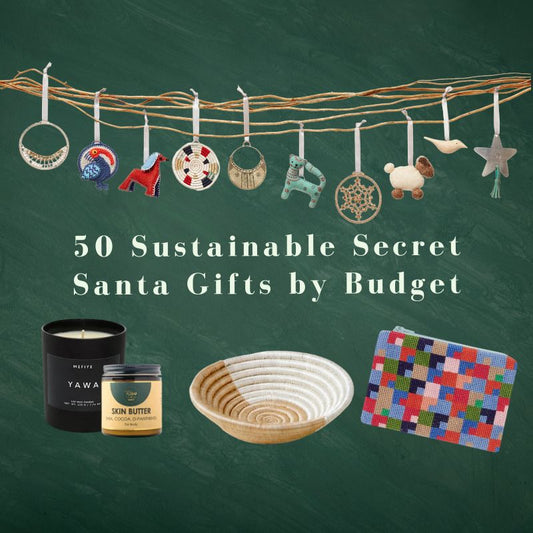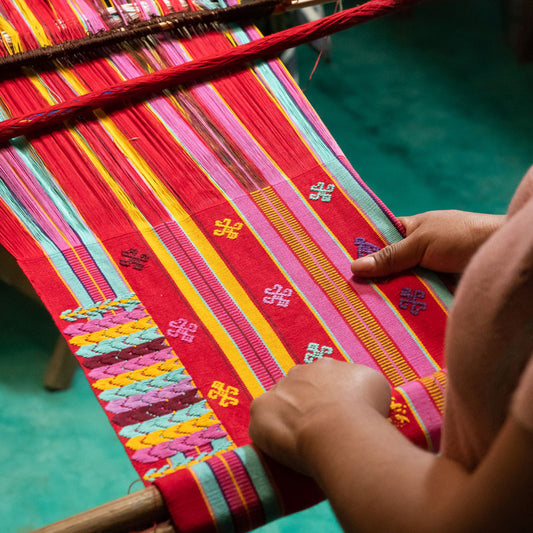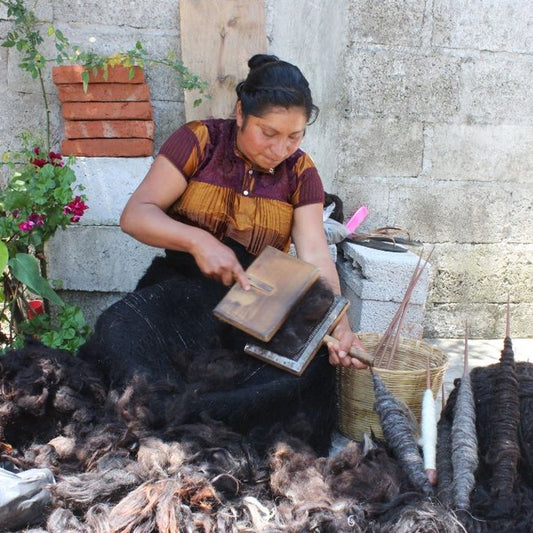AKOJO MARKET's response to government's green claims guidance.
Greenwashing. It’s a word you may have heard thrown around more and more recently. But what does it really mean?
“Greenwashing is ultimately the most damaging thing a fast fashion company can engage in – creating the illusion that the customer is doing something positive for the environment in making a purchase.” - Natasha Buchler, co-founder of AKOJO MARKET
What is greenwashing?
Greenwashing is when a company makes weak or unsubstantiated claims that appear to be benefitting the environment. And/or that they are producing in a way that is not harmful to the environment. These claims are not backed up by facts and evidence but are instead used primarily for marketing purposes, with the intent to lure customers to purchase their goods on false pretences. Crucially, it removes accountability for their actions.
The good news is the government is finally taking decisive steps to prevent greenwashing. Starting from 2022, the UK government’s Competition and Markets Authority will investigate misleading green claims (aka greenwashing) – starting with textiles and fashion.
The sad news is that many of the big players will undoubtedly find ways around the penalties. But for now, at least, it is a huge step in the right direction, and we’re thrilled that greenwashing is finally being addressed as a serious issue.
Why is greenwashing a problem?
Greenwashing, at its heart, is a completely unethical issue. It is misleading and a total breach of customer trust.
When we “buy in” to the greenwashing claims and slogans, we truly believe that we’re making a better choice. We walk away feeling happy in our purchase and confident that we are doing good for the environment. Yet the reality is, many of these products have been made in ways that are harmful to both the people who made them and for our planet.
The trick to greenwashing is that it plays upon our conscience, in turn making us more tempted to buy the product or service. Being seen as sustainable drives sales and profitability. Essentially, it’s a marketing ploy.
But the worst part is, not only is it not minimising the problem, it’s making it worse:
- By misdirecting well-intentioned customers down the wrong path.
- By encouraging sales, this is fuelling fast fashion and overproduction.
- By perpetuating often illegal, unfair practices across the global south.
- By undermining the work others are doing to use more sustainable, circular and regenerative fibres and processes.
Can a business be truly sustainable?
“The reality is, there is no such thing as an entirely sustainable business. The very nature of production will leave some carbon footprint. But you can have an entirely ethical one, and misleading customers about sustainability claims is not at all ethical.” – Natasha Buchler
Deconstructing greenwashing
Recently – without naming names – we came across this description online:
“Specifically, this product was made with Eco-Conscious Design: it contains at least 50% of a certified eco-conscious fibre or process”.
Describing what greenwashing is specifically may be tricky, but for us, this felt like the perfect example.
So let’s break it down:
“Specifically”
Makes you feel like they are going through specifics and that we can trust them.
“Eco”
Going straight to the heart of what a consumer wants to hear.
“Eco-Conscious”
A made-up term that is being used increasingly as a marketing tool. We’ve found that “conscious” is one of the most widely used terms among companies engaging in greenwashing – how can you hold anyone to account when it is so vague!
“Certified”
Notice that no actual fibre is mentioned. So how do we know what certification to trust for that fibre, material or process?
“At least 50%”
Should we really be impressed by 50%? And in the case that 50% is a regenerative or less-polluting fabric or process, what happens when it is mixed with a non-eco-friendly material? The likelihood is that it won’t be bio-degradable or easy to recycle. It’s important to consider what will happen to a product at the end of its life cycle.
“Or”
The piece de resistance! By throwing in the word “or” at the end, everything before it is essentially a possibility. In keeping it vague and non-committal, what they are really doing is giving us no useful information at all. It is important to note that not all companies who engage in greenwashing do so intentionally. In some cases, it is simply a result of a lack of knowledge on the sustainability agenda leading companies to make ill-informed assumptions. But whether intentional or not, the outcome is the same, and so it is important that we try to recognise the warning signs when we can.
How to spot greenwashing
Last week, the CMA published their guidance on greenwashing. It gives companies three months to sort themselves out before a review will take place in which their sustainability claims are questioned.
Until then, here are a few tips to help you spot greenwashing for yourselves:
- Vague descriptions and a lack of factual information.
- Overuse of generic terms like “Eco”, “Conscious”, “Considered” and “Green”.
- Not addressing the pollution and carbon that the company creates.
Can we trust symbols?
At the end of the day, sustainability claims can be very confusing. When used properly, certifications and symbols can be a great way to filter out the wheat from the chaff. But with so many different certifications and “eco-labels” now in existence – many of which are little more than self-declarations – it can be hard to navigate, let alone know which to trust.
At AKOJO MARKET, we love the use of symbols as they can quickly capture the aspects we want to communicate with our customers. Our due diligence processes are thorough and conducted on each brand, and so we feel both comfortable and proud to display our various symbols. We can tell you the credentials and certifications (and more!) for each of our products, sometimes even by heart!
But we are aware that symbols can be another way for companies to gloss over sustainability credentials and avoid adding factual information. Companies with hundreds of thousands of products, with new drops weekly, most likely will not have the capacity or time to do thorough investigations – or they simply may not want to. Yet without it, it is impossible to understand the positive, and negative, aspects of a product – so how can we trust their symbols?
We know how exhausting it can be trying to check every green claim or credential. So here’s a link to some of the most recognisable and trusted certifications:
“A Shopper’s Guide to Green Labels”.
Want to know more?
For a deep dive into what can make a business more sustainable – including the fibres used, the actual relevance of the term “locally made”, carbon offsetting and a greenwashing definition – please see our
Toolkit, published with some of the world’s leading experts on transparency in Fashion –
Good On You and
The OR Foundation.






